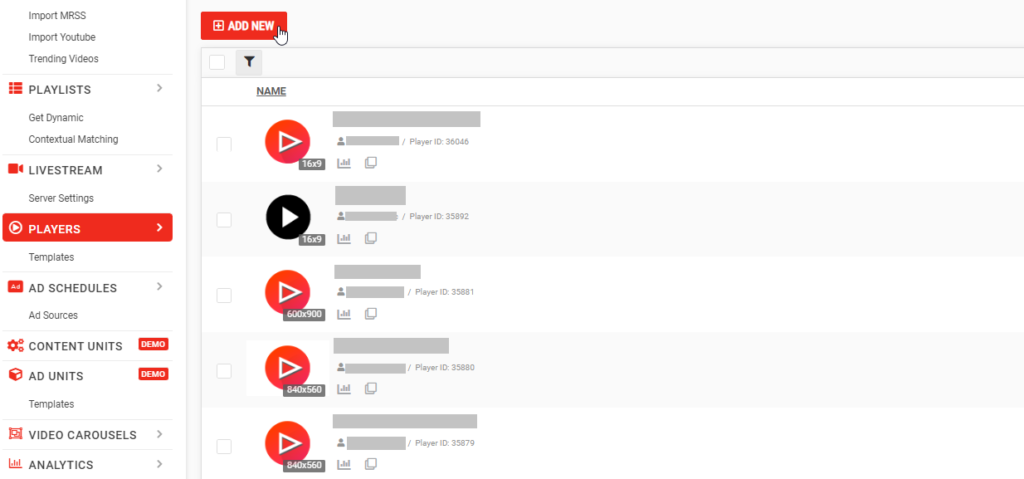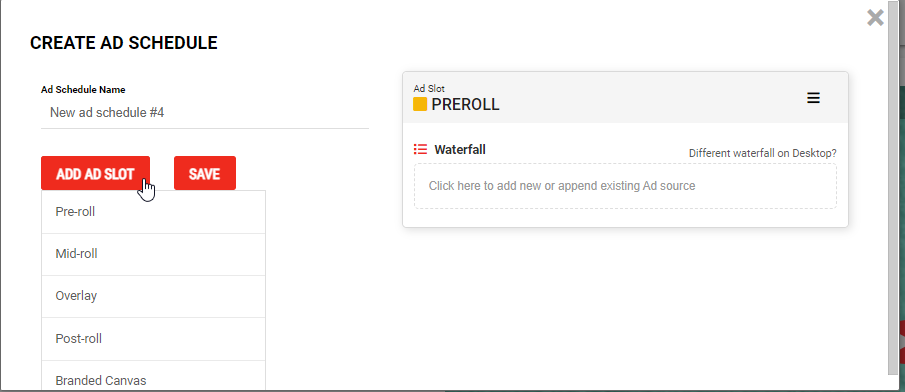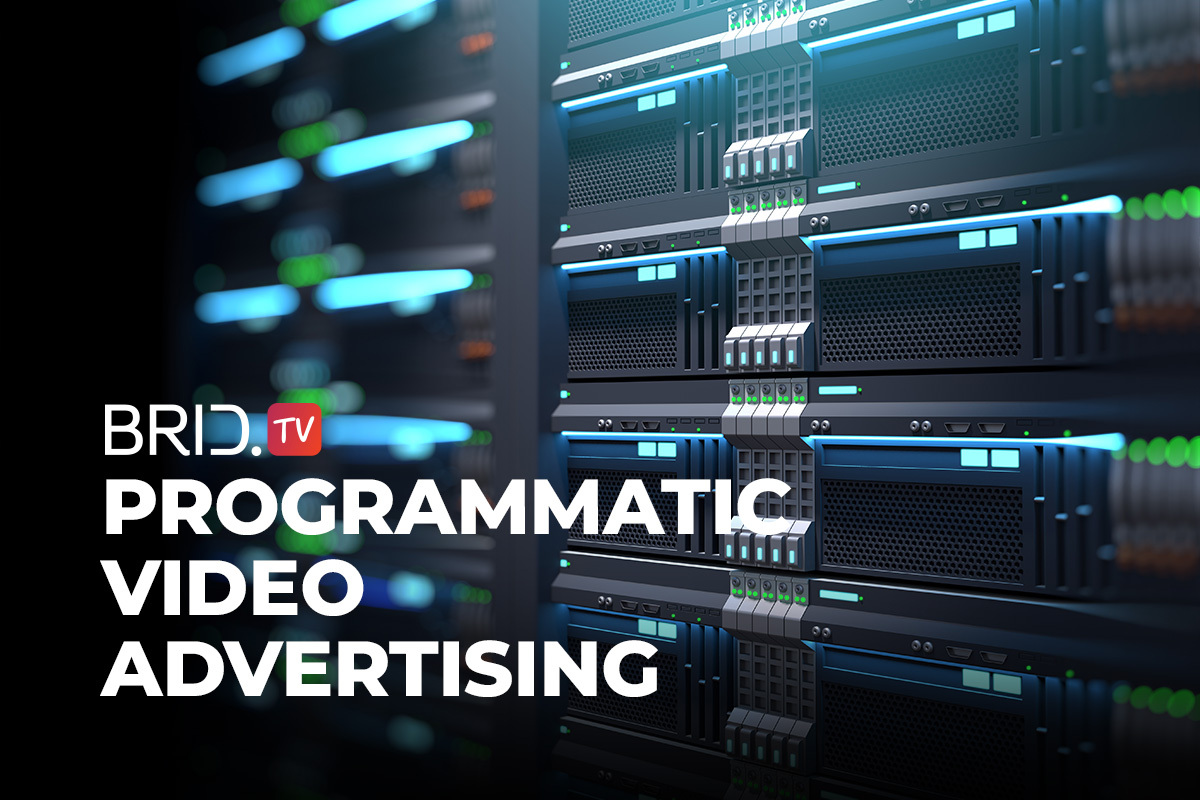Programmatic video advertising can seem like a scary new territory for beginners. However, it brings many benefits to both publishers and advertisers, and it is definitely worth the learning curve. Let’s dig deeper into what programmatic advertising is, how it works, and how your video business can thrive using programmatic ads.
- What Is Programmatic Video Advertising
- How Does Programmatic Advertising Work?
- Most Common Types of Video Ads Used in Programmatic Advertising
- Why Are Publishers Turning to Programmatic Video Advertising?
- Benefits of Programmatic Video Advertising
- The Drawbacks of Programmatic Video Advertising
- How to Start With Programmatic Video Advertising
- Get Into Programmatic Video Advertising the Easy Way With TargetVideo
- Ready to Start Monetizing With TargetVideo?
- FAQ
What Is Programmatic Video Advertising
Programmatic advertising is a method of buying and selling ad real estate in real time using a software solution such as a programmatic ad network. The process is almost entirely automatic and requires very little effort from publishers and advertisers. Programmatic video advertising, then, is programmatic advertising focused on video ad formats.
How Does Programmatic Advertising Work?
So what does the process of programmatic advertising look like exactly? It is quite complex, and it can vary depending on the platform, ad type, and transaction type. Overall, however, programmatic advertising works like this:
- A user visits the publisher’s website or plays their video.
- The website or video player puts an ad impression up for auction using a supply-side platform (SSP).
- On their end, demand-side platforms (DSPs) place bids using the ad creatives supplied by advertisers in a real-time bidding auction.
- The winning bid (i.e., the highest offer) is awarded the ad impression.
- The end user sees the ad on the publisher’s website or video player.
This entire process happens in a very short timeframe — usually, less than a second. The most common auctioning method used in programmatic video advertising is video header bidding, which allows demand sources to place bids at the same time.
Sometimes, however, the publisher may have a preferred or direct deal with an advertiser. This allows the advertiser to place a bid at a previously agreed upon CPM, but it doesn’t necessarily guarantee a winning bid. In the case of preferred deals, this advertiser’s bid will still run against all the other bids by other demand sources.
Most Common Types of Video Ads Used in Programmatic Advertising
Programmatic ad trading is an important element of digital video advertising. There are three common types of video ads that are served using programmatic — instream, outstream, and in-banner video ads.
Instream Video Ads
Instream video ads are what most people think of when they hear the phrase video advertising. These are ads that show up within the player before, during, or after a video stream, either interrupting it (linear ads) or playing along with the stream (non-linear ads). They are thus divided into pre-roll, mid-roll, and post-roll video ads respectively. They can be skippable or unskippable and can vary in length.
Outstream Video Ads
Outstream video ads show up in different places on a website, for example, between two blocks of text or on the side of the page. They appear in a video player and can start playing automatically as the user scrolls.
Outstream ads fall into two main categories — in-content outstream ads, which appear between paragraphs, and in-slide ads, which appear in a player that pops up in the corner of the screen and remains there even as the user scrolls.
In-Banner Video Ads
In-banner video ads, as the name suggests, are embedded into display ad slots. They are usually GIFs or shorter videos and contain a thumbnail image, as well as some text. They are more engaging than traditional, static banners but less intrusive than instream and outstream video ads. A great advantage for publishers when it comes to in-banner ads is that they don’t require a video player.
Why Are Publishers Turning to Programmatic Video Advertising?
More and more publishers are turning to programmatic advertising because it takes less effort and time, but generates higher fill rates and a higher potential ROI. The global programmatic ad spend amounted to just under $188 billion in 2017. In 2023, it is expected to exceed $550 billion. That is, roughly, 88% of the total ad spend for this year. And this upward trend doesn’t seem to be slowing down. According to Statista, in 2026, global advertisers will have spent over $720 billion on programmatic ads.
So why are advertisers and publishers turning to programmatic video advertising at such a high rate? The answer is quite simple — it makes the process of ad trading faster, easier, and more profitable for all parties involved.
Benefits of Programmatic Video Advertising
There are multiple advantages both publishers and advertisers get to enjoy upon switching to programmatic. Some of the main benefits of programmatic advertising are:
- Saving Time — Both advertisers and publishers can save time by switching to programmatic advertising. Since the process is automated, they won’t have to manually strike deals and spend time looking for the right match for their needs.
- Saving Resources — Saving time is closely related to saving resources. Brands that don’t use programmatic advertising usually have to have whole teams of ad experts tasked with striking deals. An automated ad buying process reduces the necessary resources exponentially.
- Better Audience Targeting — Programmatic advertising uses precise, real-time data to target the right audience for each ad. Whether it is behavioral or contextual targeting, with programmatic ads, you can be sure the message reaches the right people.
- Higher Ad Fill Rates — Letting a software solution deal with the process of ad trading, rather than doing it manually, also results in higher ad fill rates for publishers. By extension, this also brings more ad revenue.
- Real-Time Actionable Data — Another great thing about relying on ad tech is the fact that both publishers and advertisers have access to actionable, real-time data and analytics. With these, they can optimize creatives for better performance and higher revenue.
The Drawbacks of Programmatic Video Advertising
As with any other piece of technology, programmatic advertising comes with its set of pitfalls. Here are some of the biggest potential disadvantages of programmatic advertising for publishers:
- Lack of Control — Letting technology take over invariably means giving up control over the process of buying and selling ad inventory. In other words, advertisers don’t really have a say in where their ads appear. On their end, publishers don’t have control over which ads show up on their websites or players. While there are some parameters advertisers and publishers have control over, they are limited by the policy of the video ad network they’re using.
- Ad Fraud — Lack of control also means a higher risk of ad fraud. Advertisers are at risk of spending funds on bot traffic, rather than real impressions. On the other hand, publishers are at risk of giving away audience data to advertisers who don’t place bets on the auction and pocket the data instead. Luckily, both of these issues are easy to bypass with a reliable ad network that thoroughly vets its demand- and supply-side clients and has the right ad fraud protection tech in place.
- Lower CPMs — Programmatic advertising focuses on quantity. It will bring higher ad fill rates to publishers, but these ads will come at lower CPMs. With enough volume, however, this loss in revenue can be easily offset.
How to Start With Programmatic Video Advertising
Are you a publisher looking to get started with programmatic video advertising? If so, the first thing you need is ad real estate. In other words, you should either have a library of videos that you want to monetize or a platform where you want to serve outstream or in-banner video ads. If you don’t have any video content but would like to obtain some, you can count on TargetVideo’s Video Content for Publishers, which allows you to access a rich library of high-quality original videos from many different verticals.
If you don’t already have one, you will need an online video platform where you can host, manage, and distribute video content. The best OVPs have reliable, lightweight, low-latency HTML5 players that allow you to distribute content globally. Ideally, this platform should support AVOD or offer easy integration with a programmatic ad platform.
A reliable ad platform will provide you with access to high-quality ad demand. In other words, it will allow you to connect with a long list of advertisers and DSPs interested in serving video ads on your platform or in your player.
Lastly, there will be some manual setting-up to do. You need to configure the player to be able to serve ads and implement ad tags. You should also set the floor price (the lowest CPM you are willing to accept per impression) or employ an automated price floor optimizer. The last step is to embed the video player on your website, track ad performance, and enjoy the ad yield.
How To: Programmatic Advertising Step-by-Step
In short, to start monetizing with programmatic video advertising, follow these steps:
- Obtain monetizable video content or another form of ad inventory.
- Find a solution for hosting and managing your video library.
- Obtain a quality online video player and optimize it to serve ads.
- Get access to quality ad demand through your ad network of choice.
- Embed the video player on your website, track the performance of your ads, and enjoy the revenue.
Get Into Programmatic Video Advertising the Easy Way With TargetVideo
Getting started with programmatic video advertising can seem like a daunting task to beginners. But with TargetVideo, it doesn’t have to be. TargetVideo is an all-in-one video hosting, management, and monetization solution that gives publishers full control over their content from a single video CMS. The platform also comes with its own Premium Demand.
How to Serve Video Ads Programmatically on Your Website with TargetVideo
Monetizing your video content using ads with TargetVideo is a simple and straightforward process.

First, log into your account and access the CMS. In the drop-down menu at the top of the screen, choose the site you want to monetize.

Then, navigate to Players and click on the Add New button. From here, you can customize the player according to your preferences. Hover over the “Set Player Behavior” field to edit the selected template or create a new one. There, you will be able to set up player monetization.

Next, navigate to Set Player Ad Stack, and then Create New. There, you will be able to set up your ad schedule and add pre-, mid-, post-rolls, overlays, and banner ads.

The last step is to embed the video player on your website using the embed code or the TargetVideo WordPress plugin.
Ready to Start Monetizing With TargetVideo?
Are you ready to get into programmatic video advertising to boost your monetization efforts? Try TargetVideo for free and see what makes our platform the best choice for publishers.

FAQ
1. What is programmatic video advertising?
Programmatic video advertising is a video ad trading method using an automated program to make the process quicker, easier, and more affordable.
2. What does programmatic mean in advertising?
The word programmatic in advertising denotes an automated process of buying and selling ad space using a piece of software, rather than through traditional methods such as negotiating.
3. Is programmatic advertising dead?
No, programmatic advertising is very much alive and thriving. Since it makes ad trading so much easier and more affordable for all parties, it is unlikely to die down any time soon.
4. How much does programmatic advertising cost?
The cost of programmatic advertising for publishers depends on the deal they strike with their SSP or ad network. For advertisers, the cost of programmatic advertising depends on the CPMs of the inventory they bid on.
